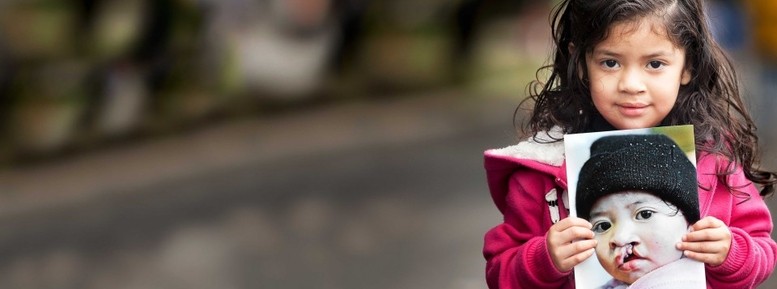Mauricio Rojas found Operation Smile almost by mistake. After studying international relations with a specific focus in negotiations and planning at University of Guadalajara, Mauricio worked as a consultant to the Ministry of Social Development. He had always been passionate about working with children and loves the hospital setting. A friend knew of Operation Smile and recommended him for a job in fundraising in 2013. After an initial interview, it became clear that Mauricio was much better suited for the position of Local Program Coordinator (PC).
"Once I heard about the job, I knew this is what I wanted to do," he said. His passion for his job shines, especially when he is asked about why Operation Smile’s work is so needed in Mexico.
On a recent medical mission to Puebla, Mexico, we sat down with Mauricio for a question and answer-style interview. Read on to learn more about the experience of a local program coordinator.
Question: What is your favorite part of the job and what are the biggest challenges you face?
My favorite part is surgery week at night, going room by room to say goodnight to all of the patients and their families. That is one of the most fulfilling moments of this job -- seeing the patients and their families happy and smiling makes all the work worth it. One big challenge is ensuring that each patient feels like family. I do this by empathizing with everyone. I tell them that your problems are my problems, that’s when change can happen in the world.
Q: Can you speak to some of the barriers to care in Mexico? Stigma surrounding clefts?
Being informed is a significant barrier. There are several other organizations that provide cleft surgery in Mexico, but Operation Smile has the highest standards of care and the best results. We work to spread trust in the community and we offer quality solutions.
Education is another barrier. Indigenous people think it is their destiny that their child was born with a cleft. They think they are cursed. Sometimes if families do know there is help available, they might hear a story about someone who had complications with surgery and they become too scared to try to get their child surgery.
We see so many children who don't go to school because of the social stigma of their cleft. Parents and teachers don't want them in school because they know that they will suffer and be bullied, so they simply don't go to school. The public health system is not broad enough to include cleft care, and their priorities are different. Many plastic and reconstructive surgeons attend to extreme emergencies and focus less on cleft care. Now that surgery is included in the development goals, I hope things will change.
Q: How has working for Operation Smile changed your professional goals, if at all?
There's a saying, "You make your living for what you get, you make your life for what you give.” I think that I can give more through Operation Smile and I get so much out of it. The best payment I can get is seeing the smile of the parents and the kids. Over time, you can see the progress of the babies to kids to teenagers and how they grow and develop. They can speak and have confidence. That's what keeps me going, I can see the direct results of what we do.
Q: Where do you see OS Mexico in 10 years?
With its own follow up programs and comprehensive mission, speech, dental orthodontics, seeing kids who have been successful and gone to college. Then, they can be spokespeople for Operation Smile in Mexico!
Q: Is there one patient whose story will always stay with you?
I don't even have to think about it. In Chiapas, an indigenous child, Nidia Nayeli. She was severely malnourished and I could see the sadness in her eyes. The doctors even told us they didn’t think she would survive another month. Operation Smile gave her family nutrition assistance and training and a few months later, she was healthy enough for surgery. Now she is a thriving 3-year-old. We are saving lives and we don’t even realize it.
Latest Stories

Meet Isaac

Beyond Surgery: Inspiring Moments with Operation Smile in Peru

